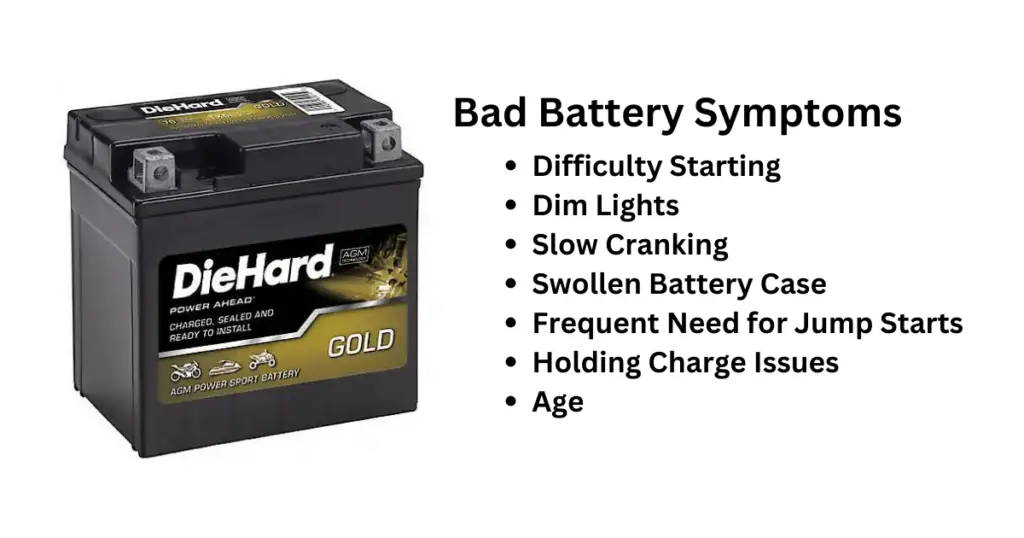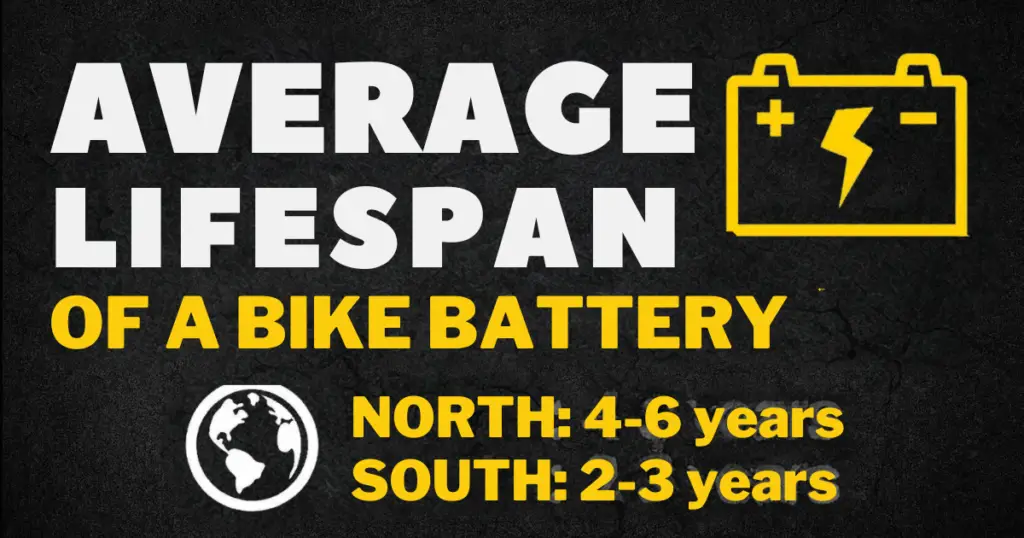Before your motorcycle leaves you stranded in the middle of nowhere, it starts dropping subtle hints. Are you seeing those signs or missing them? These indications are not to be sidelined – they are nothing but bad motorcycle battery symptoms signaling the need for attention.
This article adopts an educational, authoritative, and practical approach to demystify the signs of ailing motorcycle batteries. You’ll get the clear, actionable advice you need to diagnose battery failures before they turn into road-side emergencies. Leverage our maintenance expertise as we guide you through these symptoms, help you understand their impacts, and offer well-detailed, practical solutions for your motorcycle trouble.
Prepare to turn your panic into power as you unravel the secrets of Bad Motorcycle Battery Symptoms. Because knowledge isn’t just power – it’s the key to keep you on track, on time, and far away from unnecessary roadside stress. Are you ready? Let’s keep moving.
Can A Bad Battery Cause Poor Performance?
Yes, indeed. A bad battery can lead to poor performance of a motorcycle. When the battery is unable to provide adequate power, the bike’s vital components like the ignition system, lights, and horn start to malfunction. A faulty battery might also lead to a sluggish start or, worse, a complete failure to start. Hence, a well-functioning battery is key to a high-performing motorcycle.
Related: Motorcycle Shuts Off While Riding But Starts Back Up (Solved)
Does A Bad Battery Affect Gas Mileage? (No)
Contrary to some misconceptions, a bad battery does not directly affect gas mileage. The primary function of a battery is to supply electric power to the bike’s ignition system, lights, and other electrical components. Although a poor battery can lead to starting issues and affect the overall performance, it does not contribute to fuel consumption.
Also recommended: What Is A Rectifier On A Motorcycle? Well, Come Find Out!
Can A Bad Battery Affect Acceleration? (It Can)
While the battery doesn’t play a direct role in acceleration, a faulty one can indirectly influence it. If the battery is unable to supply the required power, the electronic fuel injection system or ignition system may not operate correctly, resulting in poor acceleration.
What Are The Signs Of A Bad Motorcycle Battery
It’s essential to recognize the symptoms of a bad motorcycle battery to prevent possible breakdowns or accidents. Here are some common signs:

- Difficulty in starting: This is one of the most obvious signs. If your motorcycle takes longer to start than usual or requires multiple attempts, it could be a damaged battery.
- Inability to hold a charge: If your battery drains quickly after being charged, it might be unable to hold power and might require a replacement.
- Physical damage: Visible deformities like bulges, cracks, or discoloration on the battery can signify internal issues.
- Dim headlights and weak horn: If your headlights are not as bright as before, or your horn has become quieter, it could be due to a dying battery.
- Erratic multimeter readings: Fluctuating voltage readings on a multimeter is a clear indication of a faulty battery.
- Multiple electronic issues: Modern bikes come with several electronic features, and a failing battery can lead to multiple malfunctions.
- Leaking acid: A leaking battery is not only near its end but also dangerous to ride with.
- Old age: No matter how well-maintained the battery is, it will show signs of failing towards the end of its lifespan, typically around four years.
How To Tell If Your Motorcycle Battery Is Bad (How To Test)
The best way to determine if your battery is bad is to perform a voltage test using a multimeter. A healthy, fully charged battery should register around 12.6 volts or higher. If the reading is below 12 volts, the battery is likely undercharged or bad. Here’s my usual steps to testing a bad motorcycle battery:
- Visual Inspection:
- Check for physical damage, corrosion, or leaks.
- Ensure terminals are clean and tight.
- Voltage Test:
- Use a digital multimeter.
- Set it to the DC voltage setting.
- Connect the red lead to the positive terminal and the black lead to the negative terminal.
- A healthy battery should read around 12.6 volts or higher.
- Load Test:
- This requires a load tester.
- Follow the tester’s instructions to apply a load.
- Watch how the battery behaves under load; a significant voltage drop indicates a weak battery.
- Hydrometer Test (for batteries with removable caps):
- Check the specific gravity of each cell.
- A reading below 1.225 indicates a charged cell, while lower readings suggest a discharged or failing cell.
- Charge and Re-test:
- Fully charge the battery.
- Perform the voltage and load tests again.
- If the battery doesn’t hold charge or performs poorly on the load test after charging, it may need replacement.
More charging system things:
> What Is A Stator On A Motorcycle? + What You Need To Know
> How To Test A Stator On A Motorcycle (Like A Pro) 101
How Long Do Batteries Normally Last?

The lifespan of a motorcycle battery depends on its type and how well it’s maintained. Generally, a good quality battery can last between three to five years. However, the battery might need a replacement earlier if it shows signs of deterioration. However, keep in mind, your geographical region has an affect on the lifespan of your battery. Colder regions typically experience shorter lifespans.
How Much Do They Cost To Replace?
The cost of replacing a motorcycle battery can vary widely depending on the make and model of the bike, the type of battery, and whether you’re doing it yourself or hiring a professional. On average, you can expect to pay anywhere from $30 to $150 for a new battery, plus installation charges if applicable.
Wrapping Up
Understanding the bad motorcycle battery symptoms is crucial for every biker. It not only helps in maintaining the bike’s performance but also prevents potential breakdowns and ensures a safe ride. Remember, regular inspection and timely replacement of the battery can go a long way in enhancing your biking experience.